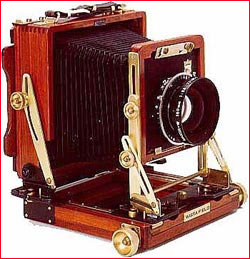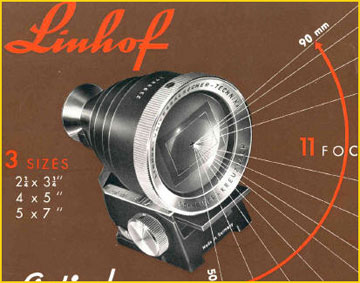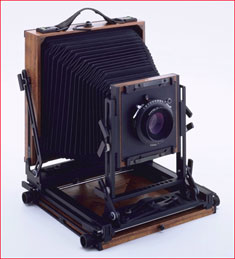Good morning! I hope everybody had a nice and safe Halloween. My son had a grand time posing as a decoration in front of the house and then leaping up and scaring the bejesus out of unsuspecting trick-or-treaters.

Playing dead and lying in wait…
The mask I answered the door in this year had the curious effect ofnotscaring the tiny children, but scaring the older kids. It was basically a grotesquely wrinkled face surrounded by copious amounts of hair. The older kids seemed to be trying to figure out what part of it might be real; the tiny kids, I think, just lumped it in with the generic "grownup" and paid it no mind.
My favorite exchange with a trick-or-treater happened a couple of years ago. Here’s how it went:
I answer the doorbell. The house is dark. In the background, Bach’sToccata and Fugue in D-minor— you know, the horror-movie organ music — is playing loudly on the stereo.
12-year-old girl (dressed as a witch, looking around hesistantly): That music is soooooo creepy. Where is it coming from?
Me (conversationally): Oh, we have a pipe organ in the dungeon.
Girl:Really?
Kids. Ya gotta love ’em.
Halloween, by the way — All Hallows Day Eve — began as the end-of-harvest celebration of the Celts, when their shamans, the Druids, celebrated memories of the dead. Psychologists generally agree that it’s healthy for children, because it helps to diffuse and de-mystify their vague natural fears of monsters.
But on to photography!
My Favorite View Cameras
Take thiscum grano salisif you like, but I think that most view cameras do their jobs pretty well, and that there isn’t much call for, well, extremism.
So that you know where I’m coming from, my two favorite 5×4" view cameras are the Wista 45DX or DXII, and the Arca-Swiss F-line. The latter is like a Honda Accord. I say this as a compliment — I drove a succession of Honda Accords in the ’80s and early ’90s, and found them to be very close to "transparent" (when that quality wasn¹t as common as it is becoming today): they get you around expeditiously and efficiently, with a minimum of fuss (if not much excitement), and they are highly reliable and undemanding in terms of maintenance. I find the same quality in the Saunders 4×5 enlarger, where it’s a great achievement. The Arca-Swiss is just wonderful as well: it’s efficient, utterly dependable, and has a form-follows-function beauty I find pleasing. What I mean by "transparent" is that it works so well that it just doesn’t call attention to itself, and you find yourself forgetting about it, able to take it for granted. A nice thing.
A different kettle of fish altogether, the Wista is a current, Japanese-built iteration of the classic folding flatbed folding field view camera, a design which has evolved over more than a century. It is also transparent to a significant degree — to me, anyway — and, especially in Japanese rosewood, it is exceptionally lovely to look at. The cherrywood DXII (the DXII has no back shift, the DX has it) is the lightest, and will look nice after it ages some, because the wood will darken with continued exposure to light.

The rosewood Wista is purty to beat the band.
A Wista will do virtually all of what I want a view camera to do, including playing the part of conversation piece. Camera aficionados evidently don’t approve of it highly, because it’s allegedly not the last word in stability, and because it has "limited bellows draw" of about 12 inches. The latter may be true if you’re a lens collector or like to do extreme closeups, but I did many tabletop jobs and copy photographs with Wistas and was never left wanting more bellows draw. Your experience may be different.

A non-folding Ebony: simple and exquisite
Hot diggety (and a dog)
The current "hot" view camera brands are the Ebonys and the Toho-not-Toyo. Ebonys are atelier-made of rare and deluxe materials, namely ebony wood, titanium fittings, and very thin real leather bellows. It seems like the more models Ebony makes, the more popular they become. Because of the materials and the high level of craftsmanship, they’re very expensive, which is generally a selling point as well, but they’re also very intelligently designed and capable. The Toho, which is reviewed in depth and with great competence by Kerry Thalmann on hissite, is evidently (I’ve never seen one) a minimalist camera designed for light weight, taking up the baton in that regard from Dick Phillips’ cameras.
Regarding the weight of view cameras, a brief story. Many years ago I visited Sally Mann on the Maury River, where she made many of her most famous photographs, and I got to watch her work. She was using a giant Toyo 8×10 fitted with a Schneider 300mm lens the size of a softball and the weight of a brick (which she generally used wide open), mounted on an enormous Majestic tripod with a geared center column. Sally’s a fairly small, almost slight, slender woman, and I’m approximately the size of the average NFL linebacker, but, watching her heft her rig around, I was moved to tell her that I’d shoot 8×10 too, if only I were strong enough. She didn’t think the joke was all that funny either, but anyway, the point is, view cameras are heavy — deal with it.

The Linhof Master Technika 2000, heir to a long tradition
Probably the most utilitarian cameras are folding technical cameras, which are similar to field views except they’re made of metal and, generally, they’re not very pretty. Wista makes a nice one, and Toyo makes several. The Rolls-Royce of technical cameras is the Linhof, which, although awesomely overbuilt, are not significantly more functional than the much more pedestrian Toyos. All of these technical cameras are more rigid than virtually any wooden field camera (including the Ebonys I’ve seen). Linhofs are used by a number of the most famous landscape photographers, including (when last I heard) John Sexton.
Another very popular outdoor view camera right now is the all-metal Canham DLC. I know Keith Canham personally, and he’s just one of the nicest guys in the entire world, and he’s been extremely kind to me — in fact, he even gave me an original Nicholas Nixon print when he traded Nick a couple of cameras for a bunch of Nick’s prints. However, with my reviewer’s hat on I cannot tell a lie, and I just can’t find a thing nice to say about the DLC — except that it can be used to hold a lens and film. Keith’s a great designer and a superb craftsman, but look at his wooden cameras.

Canham’s walnut and black-anodized aluminum make more sense than Ebony’s ebony and titanium, although the latter is certainly attractive.
In the small world of atelier-built view cameras, however, the DLC is a best-seller, while Arca-Swiss remains one of those companies that seems determined to hide its light under a bushel. It seems to have a thing against marketing. It doesn’t even have a web site, one of the six remaining companies in the world of which this can be said.* If I could gather every reader of this column into a room and ask for a show of hands of those who have evenseenan Arca-Swiss, I’ll bet we’d see precious few hands. So the DLC is much discussed, and the Arca-Swiss is hardly known. A strange and remarkable state of affairs, as the wise man said.
Cameras don’t kill people…
Despite all this, as I said at the outset, many view cameras can be used to good effect, even, strange to say, if they’re not made of exotic hardwoods and precious metals, even if they’re not gleaming showpieces worthy of display, and even if they don’t cost an arm and a leg and a tooth and a toddy of rum.
On an old Graflex Crown Graphic, for instance, you can reverse the front standard holder to get forward front tilt, and "voilá", you’ve got most of what you need to take pictures in the field. (The Crown’s Achilles’ heel is its non-reversible back, making verticals inconvenient or impossible). Berenice Abbot used a Graphic View (Graflex’s monorail), and the funky and rather delightful old Cambo with the skinny monorail can take perfectly nice pictures. I used an inexpensive (no, not cheap) Omega 45D in school for hundreds of sheets of film and was never aware of missing anything that any other camera might have provided. And, these days, you can buy a Sinar Norma for not much more than a thousand bucks, which is like being able to buy a Bugatti for the price of a Buick. Not for nothing is the Norma ensconced in the Museum of Modern Art’s Modern Design Collection. Even the old Kodak-Korona-B&J type folding bed cameras will serve you okay if you’ve got gumption, moxie, verve, good old Yankee ingenuity, or some combination thereof.
There’s an old NRA bumper-sticker that says, "Guns don’t kill people, people with guns do." Er, maybe that’s not quite it. Anyway, if the old saw "Cameras don’t take pictures, photographers do" is true of anything, it’s true of view cameras.
Oh, and since yesterday was Halloween, if everybody’s nice to me this week I might even relate the strange tale of the "Monster," an old and terrible view camera with a marvelous and dreadful history. I’ll have to look for it; it’s somewhere down in the dungeon, I think.
— Mike Johnston
*Disclaimer: I’m using a rhetorical device called "exaggeration." In plain English, what I’ve said here is that many companies do have web sites. Hell, evenIhave a web site.
See Mike Johnston’s website atwww.37thframe.com. Also, check out his monthly column in the BritishBlack & White Photographymagazine! (Usually available at Barnes & Noble bookstores.)
Want to read more? Go to the SMP Archives
Please support this column by subscribing toThe 37th Frame,Mike Johnston’s print newsletter for photographers.Mike Johnstonwrites and publishes an independent quarterly ink-on-paper magazine calledThe 37th Framefor people who are really "into" photography. His book,The Empirical Photographer, has just been published.
You can read more about Mike and findadditional articlesthat he has written for this site, as well as aSunday Morning Index.
You May Also Enjoy...
Three Towers Huangshan
Please use your browser'sBACKbutton to return to the page that brought you here.
Galleries Index
Image Gallery— An overview of the GalleryMichael Reichmann— A brief biographyPeople in The Landscape— Landscape with a human elementRural Ontario and Elsewhere Nearby— Landscape photographs
